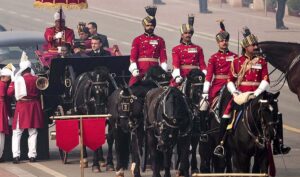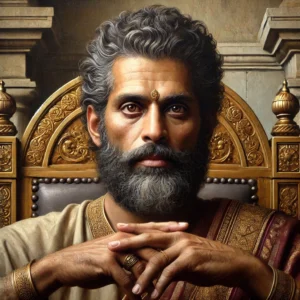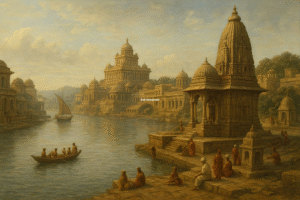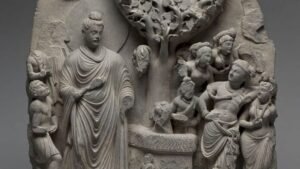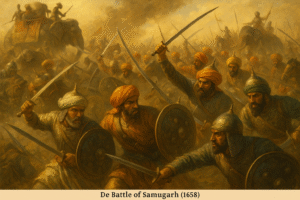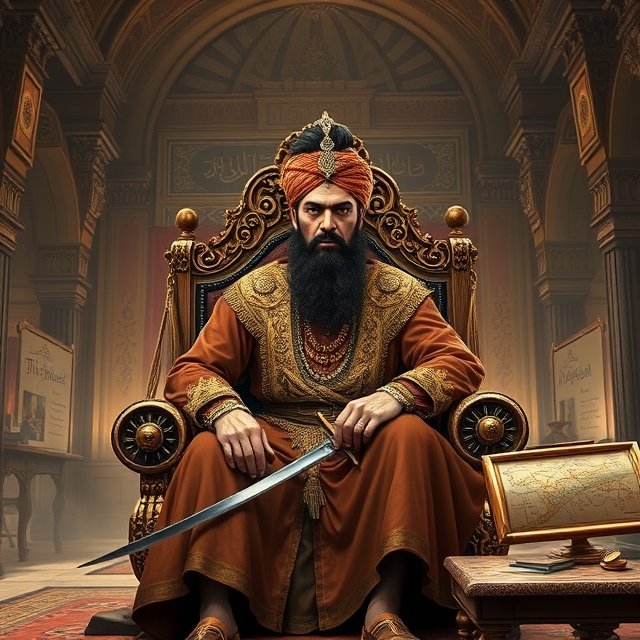
History often remembers rulers as either visionaries or tyrants, but Muhammad bin Tughlaq, the Sultan of Delhi from 1325 to 1351, defies such simplistic categorization. His reign was marked by ambitious innovations, monumental failures, and episodes of brutal tyranny. A deeply learned man with grand ideas, Tughlaq’s legacy is a mix of brilliance and chaos, making him one of the most debated figures in Indian history.
Early Life and Ascension to Power
Born in 1290 to Ghiyasuddin Tughlaq, Muhammad bin Tughlaq inherited not only his father’s empire but also his intellectual curiosity and military acumen. Educated in theology, philosophy, and Persian literature, Tughlaq was an exceptional scholar of his time. His deep knowledge of logic and astronomy set him apart from many rulers of his era.
His path to power was shaped by his father’s sudden death in 1325. Legends suggest Muhammad may have played a role in his father’s demise, although this remains a topic of historical debate. Nevertheless, he ascended the throne as a young, ambitious leader eager to expand his empire and leave an indelible mark on history.
Innovative but Flawed Policies
Muhammad bin Tughlaq’s reign is most remembered for his bold experiments in governance. While his ideas were often ahead of their time, poor execution and a lack of foresight led to disastrous consequences.
1. The Capital Relocation to Daulatabad
In an unprecedented move, Muhammad decided to shift the capital of his empire from Delhi to Daulatabad (in present-day Maharashtra). He envisioned Daulatabad as a strategically located center that could unify his northern and southern territories. It was also seen as an impregnable fortress, offering protection from potential invasions by Mongols.
However, the execution of this plan was catastrophic. The Sultan ordered the entire population of Delhi, including nobles, scholars, and commoners, to migrate to Daulatabad. The long journey across hundreds of miles caused immense suffering, with many dying en route due to exhaustion and famine. Once the capital was established, Muhammad realized the logistical nightmare of managing such a distant administration and eventually ordered a return to Delhi, leaving Daulatabad abandoned.
2. Introduction of Token Currency
Another audacious initiative was Muhammad’s introduction of token currency. Inspired by the use of paper currency in China, he issued copper coins to replace gold and silver ones. The idea was revolutionary and could have resolved the empire’s economic crisis.
However, the absence of strict regulation led to rampant counterfeiting. Anyone with access to copper could mint their own coins, leading to economic chaos. Markets rejected the currency, and trade came to a standstill. Ultimately, Muhammad had to withdraw the token currency, allowing citizens to exchange it for gold or silver—an effort that drained the treasury.
3. Taxation in the Doab
The fertile Doab region between the Ganga and Yamuna rivers was crucial to the empire’s agricultural output. In an attempt to boost revenue, Muhammad imposed harsh taxes on farmers during a time of severe famine. The exorbitant rates sparked widespread rebellion, as peasants were unable to meet the demands.
Instead of alleviating the crisis, Muhammad responded with brute force, further alienating his subjects. This policy not only devastated the agrarian economy but also eroded his support base among the rural population.
4. Military Campaigns and Ambitions
Muhammad’s military ambitions were as grand as his administrative experiments. He planned expeditions to distant lands like Khurasan (in modern-day Iran) and China, seeking to expand his empire’s borders. However, these campaigns were poorly planned and disastrously executed. Armies were dispatched without proper logistical support, resulting in heavy losses.
His attempt to annex southern kingdoms met with some success, but constant rebellions and administrative mismanagement made it impossible to retain control over these territories.
Atrocities and Unchecked Power
While Muhammad bin Tughlaq is often praised for his intellectual prowess, his reign was also marked by paranoia and cruelty. He was notorious for his brutal suppression of dissent. Rebellions were met with mass executions, and even loyal nobles lived in fear of his unpredictable wrath.
Muhammad’s harsh punishments included blinding and torture, often carried out on mere suspicion. His erratic behavior alienated his court and weakened the stability of his administration. Over time, his empire became riddled with uprisings, with many regions declaring independence.
Architectural Contributions and Urban Vision
Despite his flaws, Muhammad bin Tughlaq left a lasting legacy in architecture and urban planning. In Delhi, he commissioned the construction of forts, mosques, and canals, some of which remain standing today. The cities of Delhi and Daulatabad both bear marks of his grand architectural vision.
Daulatabad, in particular, was transformed into a well-planned city with intricate fortifications and water supply systems. While the capital relocation failed, the city itself remains a testament to Tughlaq’s ingenuity. His constructions often reflected his ambition, blending grandeur with practical purposes.
Legacy and Historical Impact
Muhammad bin Tughlaq’s reign has been a source of endless fascination for historians. His ambitious policies reveal a ruler who was far ahead of his time, willing to experiment with ideas that were groundbreaking but impractical in the medieval context.
His introduction of token currency and emphasis on scientific knowledge show his intellectual curiosity and willingness to innovate. However, his inability to foresee the social and economic repercussions of his decisions led to widespread suffering and rebellion.
Muhammad’s failures offer lessons in governance: the importance of consulting advisors, understanding the limits of one’s resources, and considering the well-being of one’s subjects. While his reign was chaotic, it set the stage for future rulers to learn from his mistakes.
The Decline and Death of Muhammad bin Tughlaq
The final years of Muhammad bin Tughlaq’s reign were marked by relentless revolts and a steady decline in his power. Provinces like Bengal, Sindh, and Gujarat declared independence, and his once vast empire began to fragment.
In 1351, during a military campaign in Sindh to quell yet another rebellion, Muhammad fell ill and died. His death marked the end of a tumultuous chapter in Indian history. The empire he left behind was weakened, setting the stage for its eventual downfall under his successors.
Conclusion
Muhammad bin Tughlaq’s reign is a tale of contrasts—a visionary ruler whose grand ideas were marred by impracticality and a lack of empathy. His legacy endures as a cautionary tale for leaders and a subject of intrigue for historians. Whether remembered as a genius or a madman, Muhammad bin Tughlaq remains an unforgettable figure in the annals of Indian history.
For history enthusiasts, his story serves as a reminder of the fine line between ambition and folly, and the enduring challenge of balancing vision with execution.

